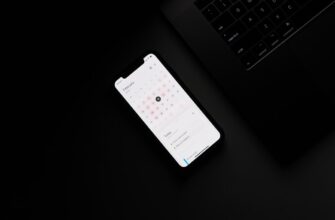In the decentralized world of cryptocurrency, your private key is the ultimate key to your digital wealth. Unlike traditional banking, there’s no password reset option—lose it, and your funds are gone forever. Many exchanges enforce KYC (Know Your Customer) procedures, requiring personal identification that compromises privacy and centralizes control. This guide provides a step-by-step approach to securing your private keys without KYC, prioritizing anonymity and self-custody. Follow these methods to become your own bank, safeguard your assets, and maintain complete financial sovereignty.
## Why Avoid KYC for Private Key Security?
KYC processes mandate sharing sensitive documents like IDs or proof of address, creating vulnerabilities:
– **Privacy Risks**: Centralized databases are hack targets; leaks expose your identity and holdings.
– **Third-Party Control**: Exchanges can freeze accounts or demand additional verification.
– **Censorship Resistance**: Non-KYC methods align with crypto’s ethos of permissionless access.
By avoiding KYC, you eliminate these threats, ensuring only you control your keys—and thus, your crypto.
## Step-by-Step Guide to Guard Your Private Key Without KYC
Follow this actionable 6-step process to generate, store, and protect private keys independently.
### Step 1: Generate Keys Offline
Always create keys on an air-gapped device (never connected to the internet):
– **Use a hardware wallet**: Brands like Ledger or Trezor generate keys offline during setup. Purchase anonymously with cash or privacy-focused cryptocurrencies.
– **Software alternatives**: Install open-source tools like Electrum on a clean offline computer. Verify software checksums to avoid tampered downloads.
### Step 2: Secure Physical Backups
Never store keys digitally. Instead:
– **Write seed phrases** on fire/water-resistant metal plates (e.g., Cryptosteel).
– **Create multiple copies**: Store in geographically separate locations (e.g., home safe + trusted relative’s vault).
– **Avoid paper**: It degrades and is vulnerable to fire/water damage.
### Step 3: Add a Passphrase Layer
Enhance security with a 25th-word passphrase:
– **Create a strong phrase**: Combine 4-6 random words (e.g., “turtle-pineapple-battery-staple”).
– **Memorize it**: Never write it with your seed phrase. Treat it like a password manager master key.
### Step 4: Isolate Transaction Signing
Conduct transactions offline to prevent remote attacks:
– **Air-gapped signing**: Use QR codes to transfer unsigned transactions between devices.
– **Dedicated devices**: Reserve a malware-free smartphone or laptop solely for crypto.
### Step 5: Implement Ongoing Protection
Maintain security long-term:
– **Regular backups**: Test recovery annually in a secure environment.
– **Avoid digital exposure**: Never screenshot, email, or cloud-store keys.
– **Physical security**: Use tamper-evident bags for hardware wallets and backups.
### Step 6: Practice Defensive Habits
– **Phishing vigilance**: Double-check URLs; never enter seeds on websites.
– **Network safety**: Use VPNs and avoid public Wi-Fi for transactions.
– **Firmware updates**: Only update hardware wallets via official sites after checksum verification.
## Risks of Non-KYC Key Management
While empowering, this approach demands responsibility:
– **Irreversible loss**: No customer support for forgotten passwords or lost keys.
– **Physical threats**: Theft, natural disasters, or human error can compromise backups.
– **No intermediaries**: You bear full liability for security lapses. Mitigate by diversifying backup locations and using multisig wallets.
## Best Practices for Long-Term Security
– **Multisig setups**: Require 2-3 keys for transactions (e.g., using Gnosis Safe).
– **Cold storage**: Keep >90% of assets in offline wallets; use hot wallets minimally.
– **Education**: Stay updated on crypto security trends via forums like Bitcoin Talk.
## Frequently Asked Questions (FAQ)
### Q1: What exactly is a private key?
A: A private key is a unique cryptographic string (e.g., 64 hexadecimal characters) that proves ownership of cryptocurrency addresses. It signs transactions and must remain secret.
### Q2: Can I use software wallets without KYC?
A: Yes! Wallets like Exodus, Electrum, or MyEtherWallet generate keys locally without ID checks. Always download from official sources to avoid malware.
### Q3: Is a hardware wallet necessary?
A: Not mandatory but highly recommended. Hardware wallets isolate keys from internet-connected devices, drastically reducing hack risks compared to software alternatives.
### Q4: How do I recover funds if I lose my hardware wallet?
A: Use your seed phrase (backed up in Step 2) to restore keys on a new device. The wallet itself is replaceable; the phrase is irreplaceable.
### Q5: Are non-KYC methods legal?
A: In most jurisdictions, self-custody is legal. However, tax obligations still apply. Consult local regulations regarding crypto holdings.
### Q6: Can someone steal my crypto if they find my seed phrase?
A: Yes—anyone with your seed phrase can access your funds. This is why physical security (safes, hidden locations) is critical.
### Q7: What’s the biggest mistake in non-KYC key management?
A: Storing digital copies of seeds or phrases. Cloud backups, photos, or text files are high-risk; opt for offline, physical storage only.
Guarding your private key without KYC places you firmly in control of your financial future. By meticulously following these steps—prioritizing offline generation, robust backups, and disciplined habits—you create an impregnable fortress around your crypto assets. Remember: in decentralization, true security begins and ends with you.








